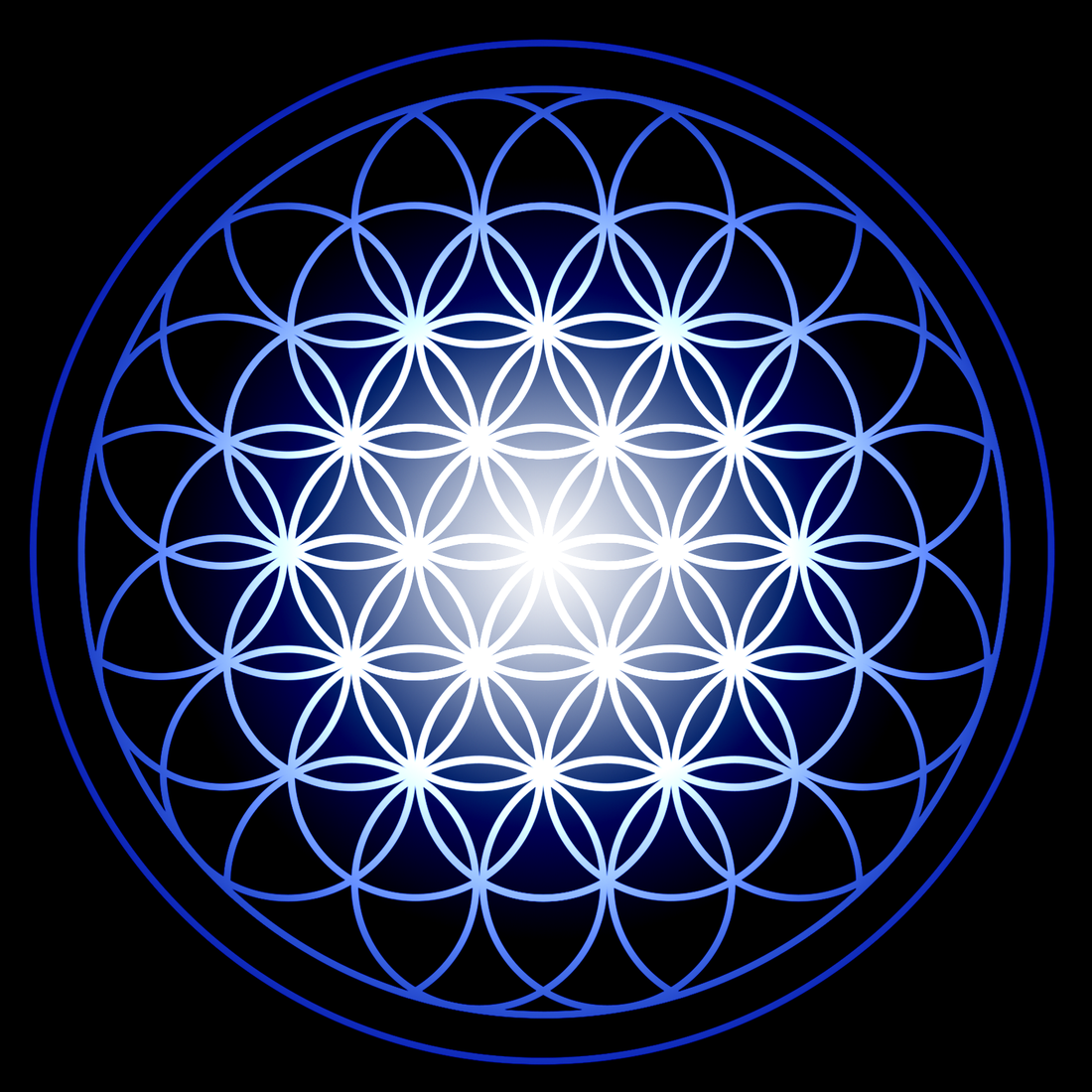
The Origins of Sacred Geometry Artwork
Sacred geometry artwork finds its roots in the dawn of human civilization, where early cultures recognized the intrinsic beauty and significance of geometric patterns. The precise application of geometry in art and architecture was not just about aesthetics; it held deep spiritual and religious meanings.
Ancient Egypt
In the land of the pharaohs, sacred geometry played a pivotal role in the construction of the pyramids. These colossal structures weren't merely tombs; they were architectural marvels built with an astounding understanding of geometry. The pyramids' alignment with the cardinal points and the mathematical precision in their construction demonstrate Egypt's deep reverence for the divine proportions inherent in sacred geometry.
Ancient Greece
In ancient Greece, philosophers like Pythagoras recognized the profound connections between geometry, mathematics, and the cosmos. Pythagoras' theorem, a fundamental principle in geometry, laid the foundation for sacred geometry's philosophical underpinnings. The Greeks saw geometry as a way to unlock the mysteries of the universe, and this reverence influenced their art and architecture.
The Flower of Life

The Flower of Life is a captivating and intricate sacred geometry pattern that consists of multiple evenly-spaced, overlapping circles. Its name is fitting, as it resembles a blossoming flower. This symbol has a rich history and deep spiritual significance across various cultures.
Egypt
In ancient Egypt, the Flower of Life was inscribed in the Temple of Osiris at Abydos, dating back more than 6,000 years. It is believed to represent the cycle of creation and the fundamental shapes and proportions governing the universe.
Israel
In Jewish mysticism, the Flower of Life is associated with the Kabbalah. It represents the ten emanations of God and the interconnectedness of all life. Kabbalistic artists often incorporate this symbol into their work to convey spiritual concepts.
Contemporary Art
Modern artists like myself Quentin Carpenter Natureofflowers.com have embraced the Flower of Life as a symbol of unity and interconnectedness. It appears in a myriad of forms, from paintings and sculptures to digital art and jewelry, serving as a visual reminder of the harmony that underlies existence.
The Vesica Piscis

The Vesica Piscis, a geometric figure formed by the intersection of two circles of equal size, holds profound symbolism and has appeared in various historical contexts.
Early Christianity
In early Christian art and architecture, the Vesica Piscis was used to symbolize the fish, a secret sign of Christianity during periods of persecution. This symbol encapsulated the belief in Christ as the "fisher of men" and the union of the divine and human realms.
Ancient Wisdom
The Vesica Piscis is often associated with the concept of duality and unity. It represents the coming together of opposites, making it a powerful symbol for balance and harmony in both spiritual and secular contexts.
Stained Glass Windows
Many cathedrals feature stunning stained glass windows that incorporate the Vesica Piscis. These windows not only display exceptional craftsmanship but also serve as portals to the divine, casting vibrant, colored light into sacred spaces.
The Sri Yantra

The Sri Yantra, a sacred geometry symbol originating from Hinduism, is a masterpiece of geometric complexity and spiritual depth.
Hinduism
In Hinduism, the Sri Yantra is considered the visual representation of the sound OM, the primordial sound of the universe. It embodies the principles of creation, preservation, and destruction, reflecting the eternal rhythm of existence.
Meditation and Enlightenment
The Sri Yantra serves as a powerful tool for meditation and spiritual awakening. Meditating upon this intricate symbol is believed to lead to profound insights, aligning the practitioner with the cosmic order.
Artistic Expression
Artists who draw inspiration from the Sri Yantra create mesmerizing works of art that blend mathematics and spirituality. These artworks not only showcase incredible precision but also invite viewers to contemplate the infinite layers of existence.
Metatron's Cube

Metatron's Cube is a geometric figure composed of 13 equal circles with lines extending from the center of each circle to the center of the other 12 circles. It holds a special place in the realm of sacred geometry.
Archangel Metatron
The name of this sacred geometry figure is derived from Archangel Metatron, who is often considered an intermediary between the divine and human realms. Metatron's Cube is believed to contain the fundamental shapes and patterns of creation.
Cosmic Harmony
Artists who incorporate Metatron's Cube into their work often explore themes of divine order and cosmic harmony. The intricate interplay of circles and lines reflects the interconnectedness of all things in the universe.
Contemporary Interpretations
In contemporary art, Metatron's Cube has found new life. Artists use it as a symbol to convey the idea that the universe is an intricate tapestry of geometry, energy, and consciousness. Paintings, sculptures, and digital art pieces featuring Metatron's Cube are a testament to the enduring relevance of sacred geometry in the modern world.
The Seed of Life

The Seed of Life, consisting of seven evenly-spaced circles, is a foundational sacred geometry symbol with its own unique symbolism and significance.
Genesis of Existence
The Seed of Life is often seen as a precursor to the Flower of Life, representing the seven days of creation in the Judeo-Christian tradition. It symbolizes the genesis of existence and the divine order underlying the universe.
Artistic Interpretations
Artists have long been drawn to the Seed of Life's elegant simplicity and profound symbolism. They incorporate it into various forms of art, from intricate mandalas to jewelry design. Each rendition seeks to capture the essence of creation and the interconnectedness of all living things.
Conclusion
In conclusion, sacred geometry artwork transcends the boundaries of culture and time, inviting us to contemplate the mysteries of the universe and our place within it. From the precise geometrical constructions of ancient Egypt and Greece to the contemporary expressions of spiritual awakening, sacred geometry continues to inspire and captivate. As we explore these powerful designs, we discover not only their visual beauty but also their timeless wisdom, connecting us to the profound truths that govern existence. Sacred geometry is more than art; it is a profound exploration of the interconnectedness and harmony that underlie our reality, beckoning us to explore the boundless depths of human consciousness and creativity.
---


1 comment
I have been looking for a good article with examples for my friends who don’t k ow about this, yet. Thank you for such a good article!